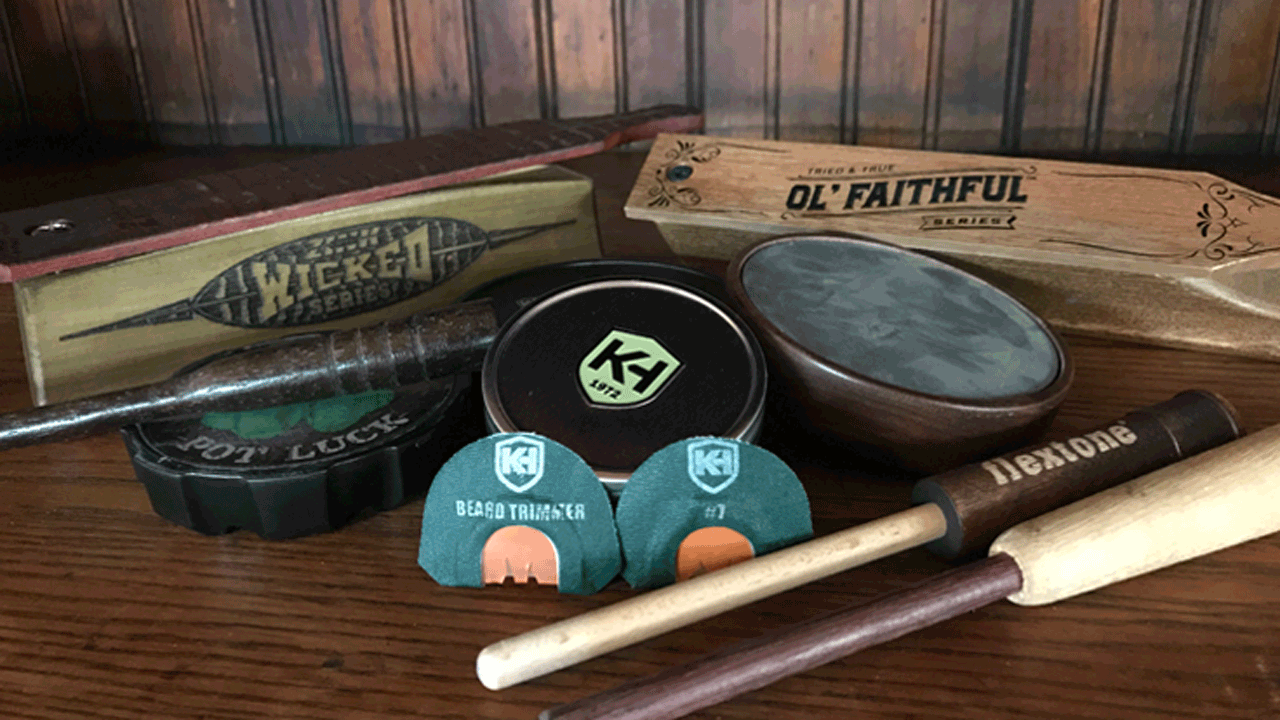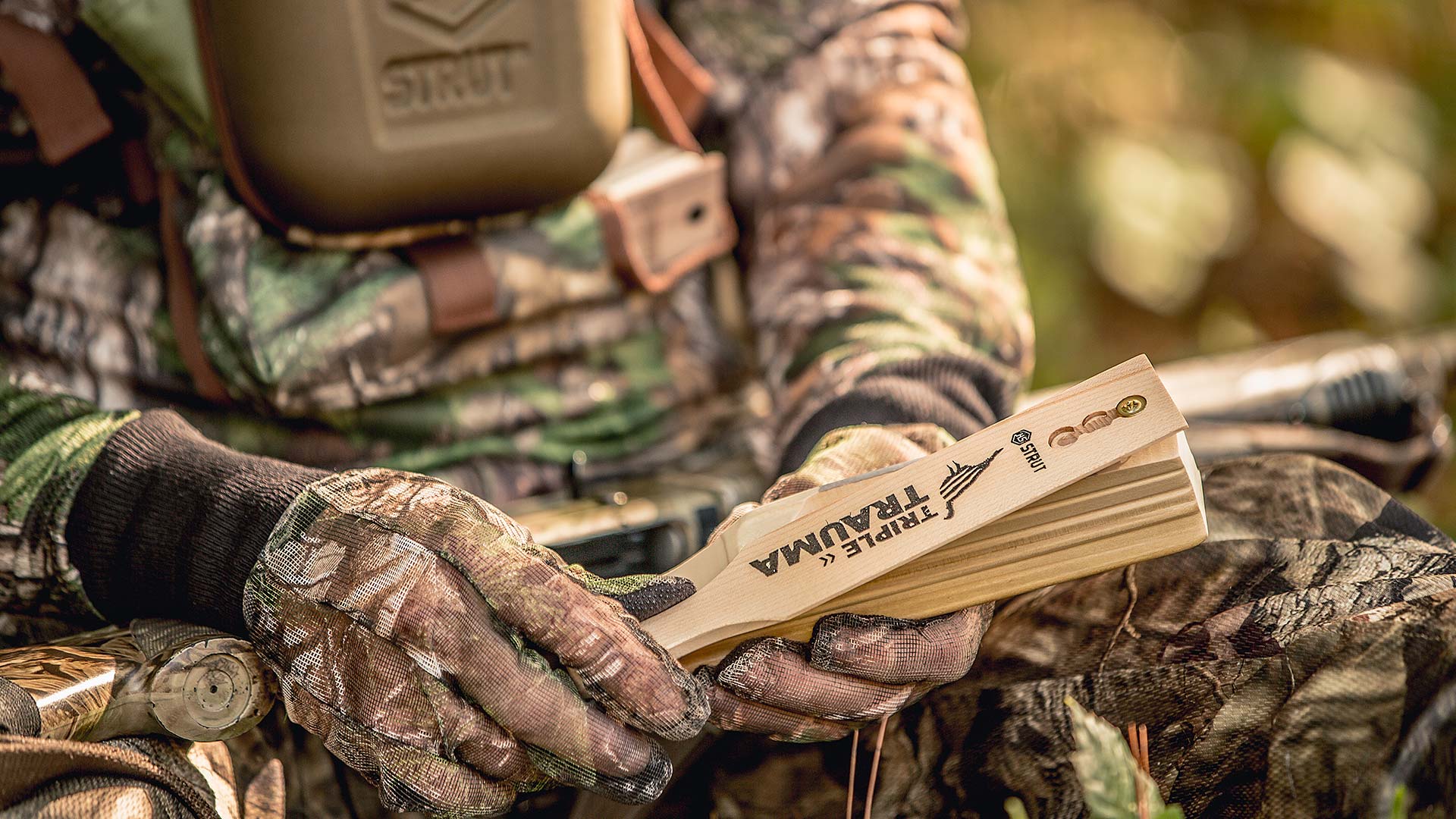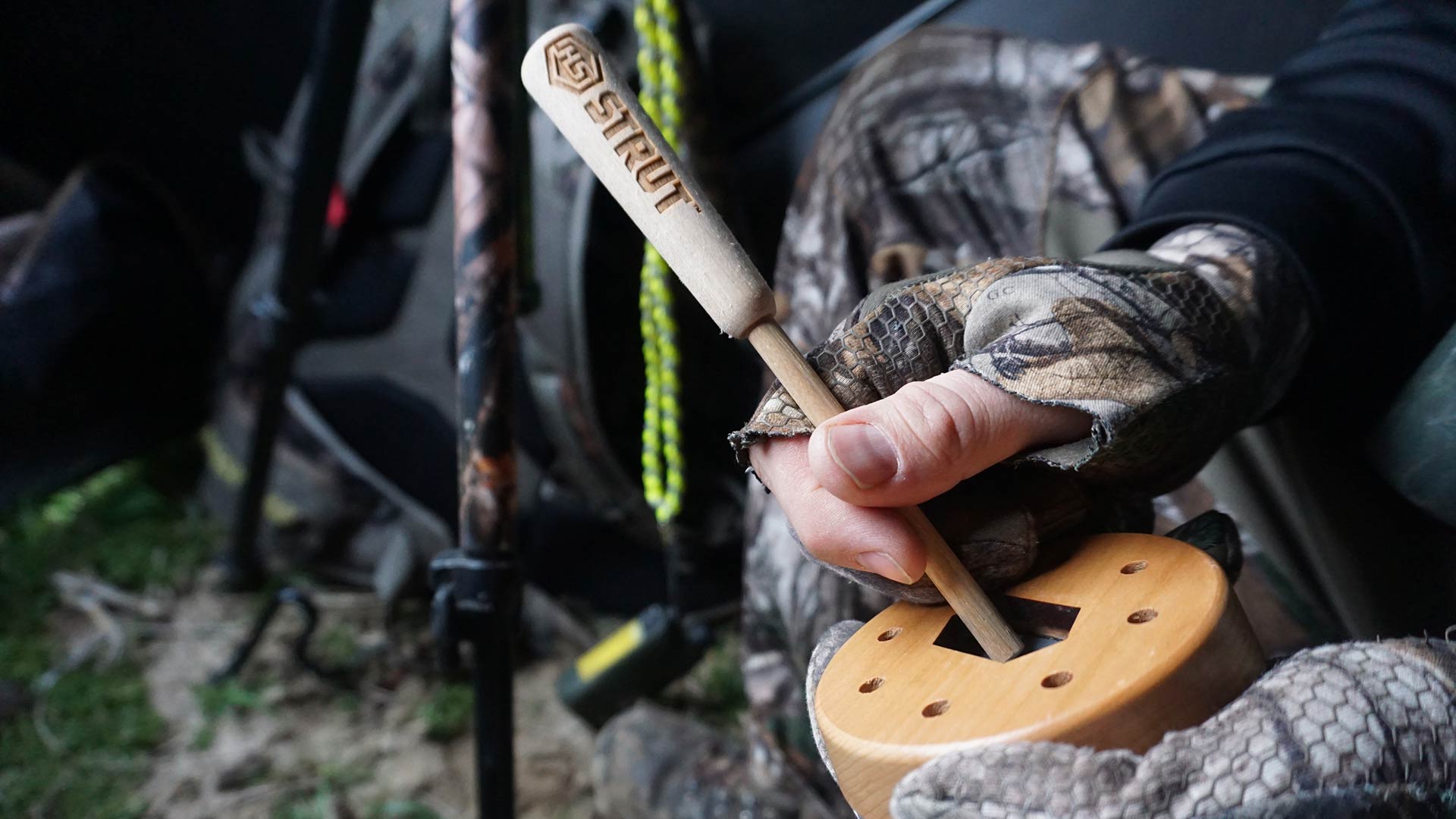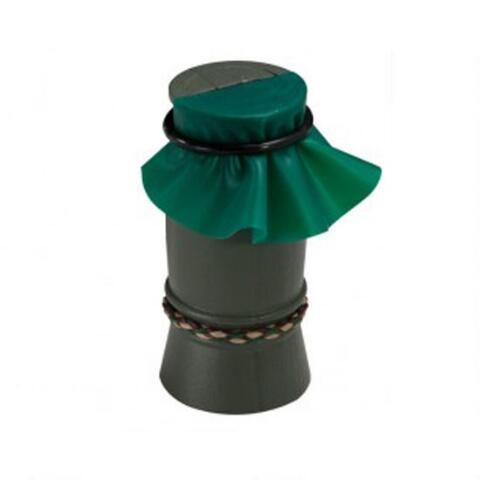One of the greatest aspects of turkey hunting is the fact that it allows you to literally communicate with a wild animal. The guys at Primos Hunting refer to it as “speaking their language”. Other than elk, no other critter on earth allows you the opportunity to display such a variety of calling sounds as the wild turkey. And while some turkey hunters mimic the sounds of turkeys with their natural voice, most hunters rely on calls. Calls of all sizes, shapes and sounds are used in the turkey hunter’s arsenal each spring and fall to lure birds within range. Here’s a breakdown by category of the different types of turkey calls you’ll find in the turkey hunter’s vest.

Box Calls
The box call is one of the most common turkey calls you’ll find. They are simple to use and produce some incredibly realistic hen sounds. Their ease of use make them the perfect call for the beginner turkey hunter, yet veteran hunters across the country still rely on the box call because of the volume and realism they produce. The downside of the box call is that they are vulnerable to wet weather and simply cannot function once soaked. In recent years, call manufacturers have begun to make waterproof box calls, but many of these seem to trade sound quality for waterproofing. Finding one that can do both can be tough.

Slate Calls
Slate calls have evolved over the years from what use to be an actual piece of slate cupped in your hand, to a piece of slate fixed to a wooden or plastic pot that a hunter would scratch on with a wooden peg, or striker. Nowadays you’ll find slate calls made of glass, crystal, aluminum and other materials. They create a lot of variety in sound and frequency. They are fairly simple to use once you learn how to position the striker on the pot. In the right hands, this call can produce a medley of turkey sounds as sweet as you’ll ever hear. Like the box call, slate calls won’t work well when wet. Waterproof strikers and pot materials have changed the game in more recent years, but again, waterproof material can often be a trade off for quality sound.

Push-Pull Calls
Push-pull turkey calls are likely the easiest of all turkey calls to use, allowing hunters to easily produce a variety of realistic turkey sounds. It’s a friction-style call that works by pushing and/or pulling a peg on the outside of the call, forcing a surface across a peg on the inside of the call. If you can push a buttton, you can call turkeys with this call. It produces realistic yelps, clucks and purrs. It’s also a great call for producing the fighting turkey sounds that can draw a gobbler in when nothing else will.

Mouth Diaphragm Calls
No matter what call you start on, the mouth diaphragm call should definitely be one you add to your bag of tricks sooner or later. No other call allows you to be as smooth and stealthy as the mouth call. It’s a hands free option that’ll help you bag more turkeys, no doubt. Because the call is in your mouth, you never have to worry about the weather or moisture ruining your ability to use the call. And while it is one of the toughest turkey calls to master, it can run a plethora of turkey sounds once you figure out how to use it properly. Some hunters struggle with the gag reflex when trying to use a mouth call. If this is you, just keep practicing. Keep the call in your mouth as much as you can. Practice while you’re in the car, working in the yard, or sitting on the sofa. It is the most versatile call of all the calls you’ll ever use in the turkey woods.

Tube Calls
Back in the day turkey hunters would stretch a rubber reed across the top of a snuff can to create a tube-style turkey call. Snuff can yelpers proved deadly in the turkey woods with countless hunters using them to lure birds within range. The snuff can evolved into manufactured tube calls that are still around today. The calls have a unique sound that closely mimics the yelps, clucks and cutting of the hen turkey. With some practice, the tube call can also make a very realistic gobble sound as well. The tube call is one of the tougher calls to master and one not typically recommended for beginners.

Wingbone Yelper
Nostalgic turkey hunters often employ the wingbone yelper call to draw their bird within range of their shotgun. As the name emplies, this call is made from actual bones of a turkey. Records and journals dating back to the 16th and 17th centuries indicate that these calls were used by pioneers for calling turkeys many many years ago. So it’s a fun call to step back in time with even today. The wingbone yelper is one of the toughest calls to learn to use, so it’s rarely recommended for beginners. You make sounds on the call by moving air through the call with a sucking technique, as opposed to blowing on the call. Modern versions of the call have taken on a trumpet style as opposed to the traditional wingbone design of days gone by.

The Best Turkey Call?
The reality is there is no “best” turkey call. Each call type presents it’s own set of pros and cons. If most turkey hunters had to pick a single call to take into the woods my guess is they would pick either the mouth diaphragm or the fiction/slate call. Both calls are relatively simple to use, produce a very wide array of turkey sounds, and have proven themselves time and time again.
The key to success is to find a variety of calls that you’re comfortable with and can run confidently. Don’t limit yourself to just one call. You’ll be amazed at how turkeys will completely ignore one call and then come running to the next. It’s simply a matter of what particular sound connects with them at that particular moment, and that can often change from day to day. That’s what makes calling turkeys so much fun. Speak the turkey language this spring and you’ll have all the fun you can handle as you put more gobblers in the back of the truck this season.